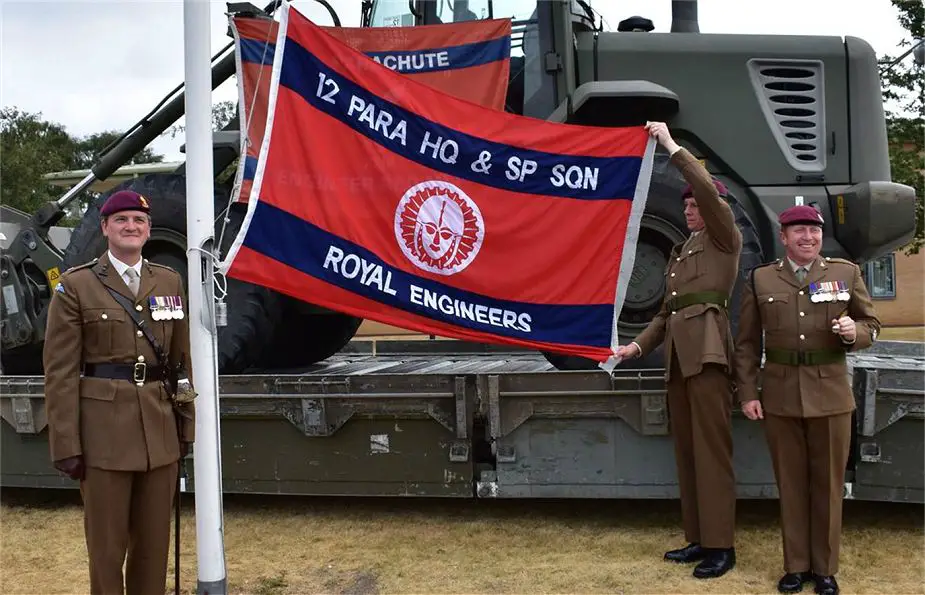Breaking news
Revival of engineer squadron to support British Army airborne rapid reaction force.
British army engineer squadron has been revived and celebrated its past on operations in Burma during the Second World War, its present home in Suffolk and its future supporting the British Army’s airborne rapid reaction force.

A parade at Woodbridge’s Rock Barracks saw 12 Parachute Headquarters and Support Squadron restored to the ranks of 23 Parachute Engineer Regiment. (Picture source British MoD)
The reorganisation leaves 23 Para Engr Regt’s two combat engineering squadrons – 9 and 51 Parachute Squadrons – as more focussed units that can be reinforced with 12 Para HQ & Sp Sqn’s specialist capabilities according to operational need.
The Squadron’s new emblem includes a spinning wheel or ashoka chakra – representing its adoption of the airborne role during the Second World War in Burma and symbolising the Hindu tenets of evolution and understanding – and the Sutton Hoo Helmet, an ornate Anglo-Saxon helmet dug up near Woodbridge that serves to embody the airborne sappers’ warrior spirit.
Major Lee Loxley, Officer Commanding 12 Para HQ & Sp Sqn, said: “It is important that we shape our forces to face our demanding operational role and a hugely proud occasion to start a new chapter in the Squadron’s rich history. The new emblem reflects our fighting spirit, pride in our local area and values and standards. The Squadron encompasses a wide range of specialist capabilities that we can use to support the wider Regiment as required and we look forward to a busy future.”
The Squadron can trace its history back to 1784 when a Corps of Royal Military Artificers unit was formed to build fortifications at Halifax in Canada. Under different identities and including at least five previous periods of suspended animation the squadron has served with distinction in the Crimea, Boer War, First and Second World Wars, Korea, Aden and Northern Ireland. It most recent incarnation saw it reformed in 2002 with the creation of 23 Engineer Regiment (Air Assault) and deployed on operations in Iraq and Afghanistan before being disbanded in 2013.




























